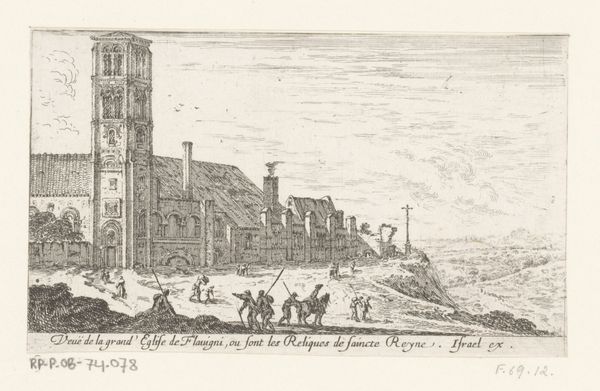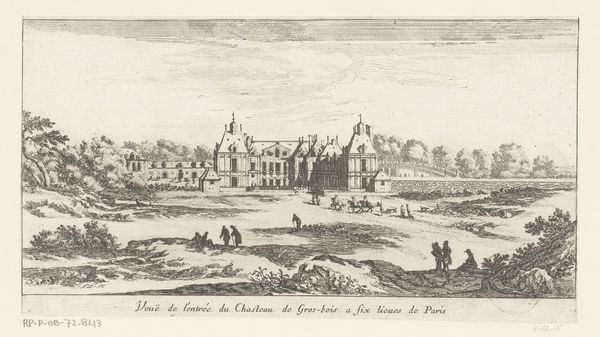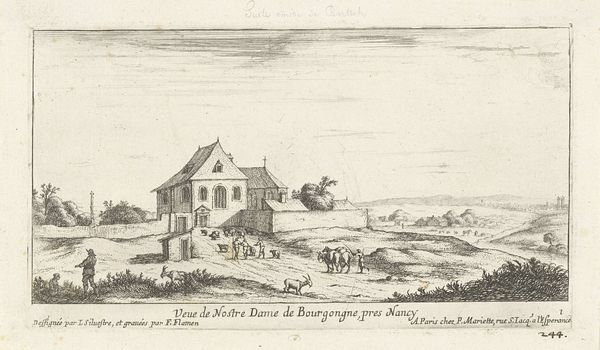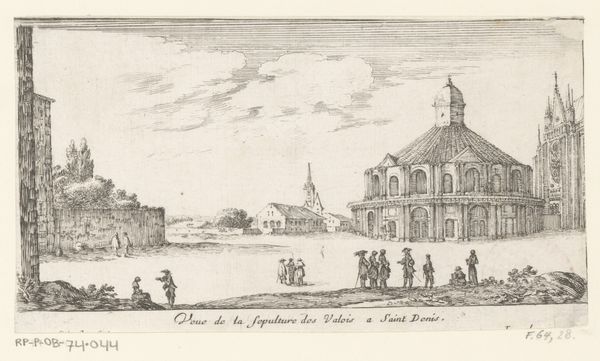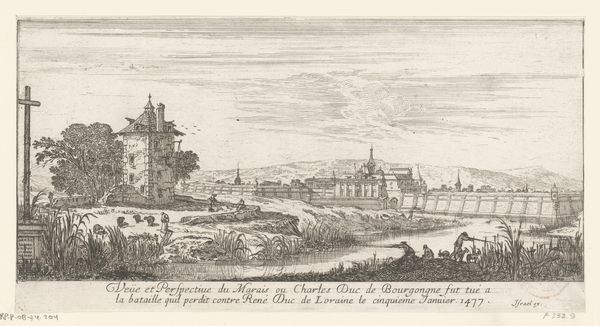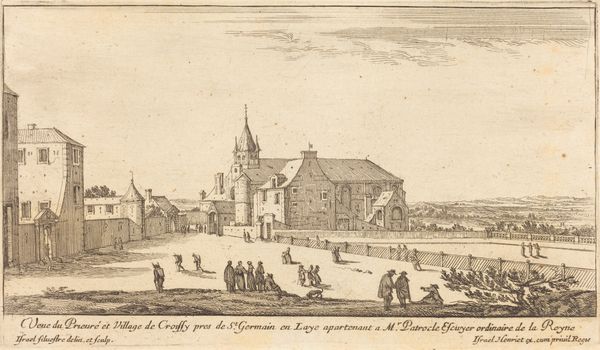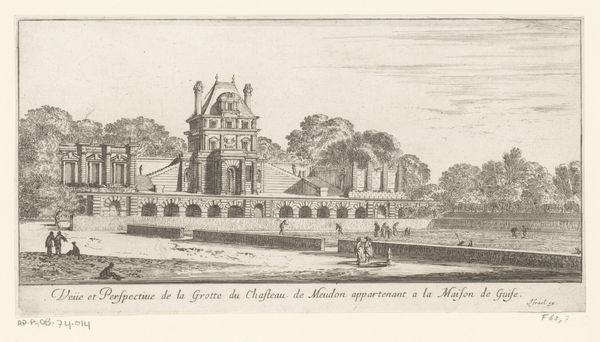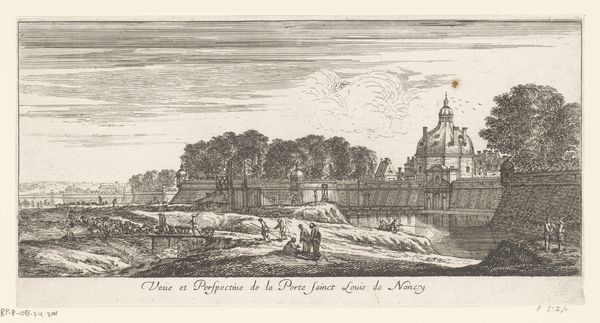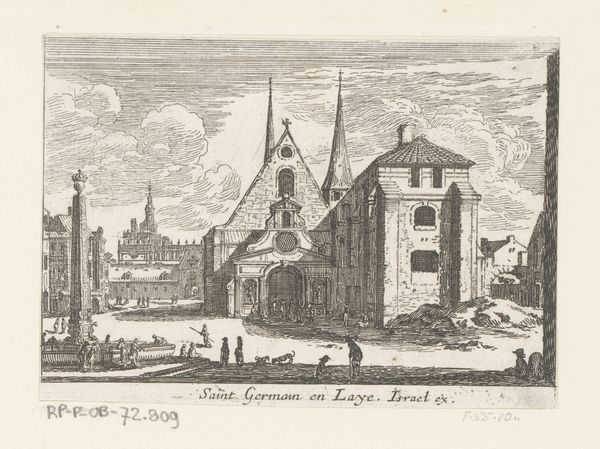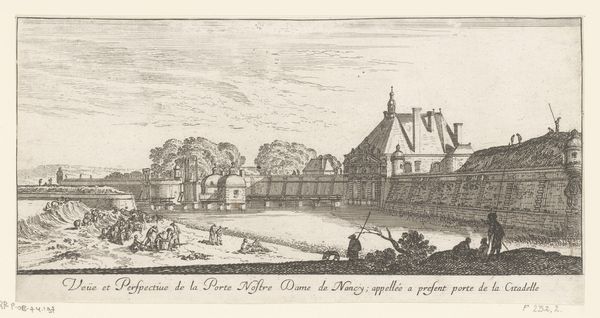
print, intaglio, engraving, architecture
#
baroque
# print
#
intaglio
#
landscape
#
line
#
cityscape
#
engraving
#
architecture
Dimensions: height 121 mm, width 239 mm
Copyright: Rijks Museum: Open Domain
Curator: Here we have "View of the Gate of Saint George in Nancy," a work from 1650 by Israel Silvestre, held at the Rijksmuseum. It's an engraving, showcasing the Porte Saint-Georges. What strikes you about this image? Editor: Its scale is impressive, especially for an engraving. There's a stillness, almost staged. Despite the people milling about, it feels monumental and perhaps even a little foreboding. Is that connected to Nancy’s role in broader territorial conflicts? Curator: Very possibly. This gateway, depicted with such meticulous detail, served both a functional and symbolic purpose. Notice the architectural vocabulary, evoking the Baroque era—but perhaps signaling strength and power as well as ornate aesthetics? Think of its position as a city entrance and a defensive point. The symbolism is intertwined with its function as a site of control. Editor: Absolutely. And that ties into something deeper. What kind of narratives about authority were being constructed in France at this time? The gate becomes not just a point of entry but a stage for performing and solidifying power. Curator: That’s a key element of the image. The perspective and the detailed rendering invite the viewer to participate in this staging. And it draws the eye upward towards the figure on horseback. Beyond the gate itself, we're offered a glimpse into a much more idealized vision of hierarchy and civic space. Editor: I wonder how much the image reflects actual urban experience for marginalized populations in Nancy? We have all this focus on power, but that should push us to ask, who is conspicuously missing from the frame? Or who's relegated to the background noise of everyday life here? Curator: These questions really make us consider who gets to participate in these idealized visions. Editor: It prompts us to look closer. A monumental architectural symbol can tell as much about cultural memory as it tells about those who have been left out. It becomes about looking for the ghost presences. Thank you. Curator: Thank you, for underscoring the complexities embedded in these cityscapes. A seemingly straightforward view turns into an intricate landscape of social, political, and historical reflection.
Comments
No comments
Be the first to comment and join the conversation on the ultimate creative platform.

